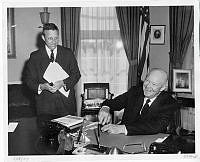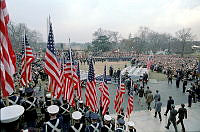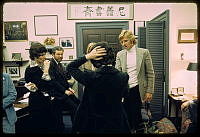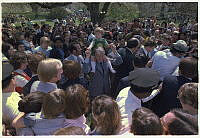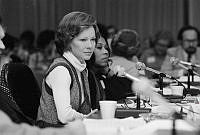Foreword; White House History (Number 35)
Copyright © Summer 2014 White House Historical Association. All rights reserved under international copyright conventions. No part of this article may be reproduced or utilized in any form or by any means, electronic or mechanical, including photocopying, recording, or by any information storage and retrieval system, without permission in writing from the publisher. Requests for reprint permissions should be addressed to books@whha.org
This number of White House History recalls the burning of the White House, which took place in 1814, two hundred years ago this August 24th. It was destruction managed in formal order by the best European military standards of the time. The fire expert in charge, Ensign John Pratt, having fulfilled similar responsibilities in Wellington’s Spanish Campaign, directed the process. Repair of this most political house came naturally through politics.
The fire calls up many stories—the flight of the President and Mrs. Madison, the published account of the slave youth, Paul Jennings, the presidential dinner consumed by the British officers, the javelins of fire. And, after the smoke cleared, and the worst was over, President Madison faced the question of what to do about the American capital now. The White House was a burnt-out shell. Rebuild it or not? Sutton–Scarsdale, one of Britain’s greatest Georgian houses—a house much more ambitious and about half a century older than the White House—was not burned but stripped and left a shell in about 1925. To encounter the beautiful ruins, standing weed-choked across a pasture in Derbyshire, gives an idea of what Madison faced after the fire and illustrates his dilemma.
Beauty had nothing to do with restoring the burned White House. When members of congress debated moving the capital further west, the alarmed administration called for “repairing” the public buildings, to anchor Washington where it was. The ruin was surveyed by architect George Hadfield, and repair deemed very expensive. Nevertheless, Madison’s colleagues achieved in congress a bill to rebuild. Proposals for improvements by the architect B. Henry Latrobe were noted, but, wrote Madison, “It will be best . . . not to deviate from the models destroyed.”
He summoned the original builder of the house, James Hoban. Work began at once. James Monroe came into the presidency in 1817 just in time to make only minute changes and the finished house was opened New Year’s Day 1818, twenty-eight months after the fire.
White House History revisits the burning and reconstruction of the White House from a variety of points of view, featuring individuals involved in the fire, rescues, dangers and aftermath, a little archaeology, and biography. In the auction inventory of Dolley Madison’s possessions you will find the mementos she treasured from the great melodrama, of which she stands first in legend and memory.

A scared window hood, right, stripped of white paint in the 1980s, looks much as it did after the British departed and the sandstone walls began to cool.








